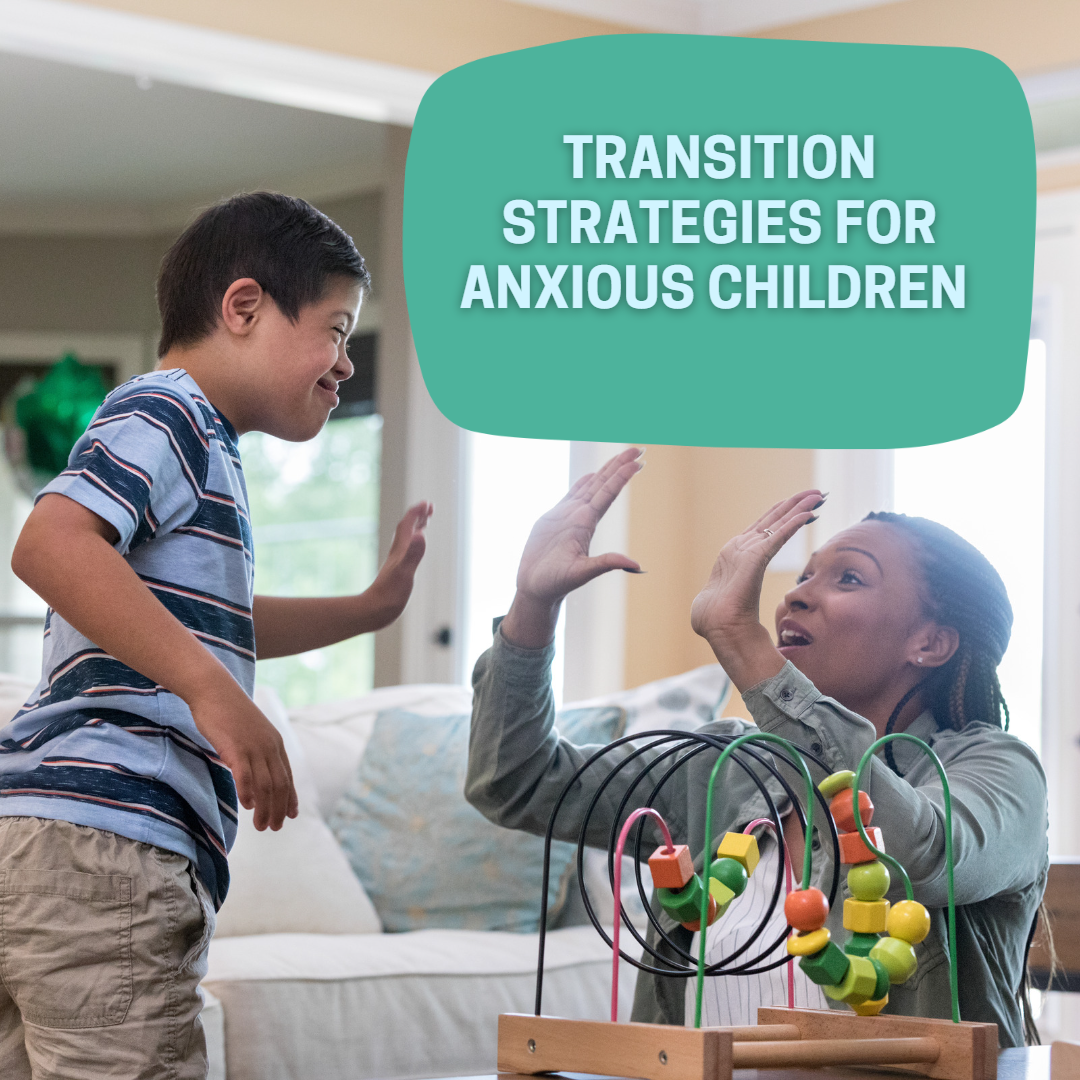Blog
Transition Strategies For Anxious Children

“Before anything else, preparation is the key to success.”
— Alexander Graham Bell
In this post, we’re going to look transition strategies for anxious children and take a look at specific ideas and suggestions for the first category of transition strategies: Preparation. As you do in most areas of life with sensory children, you’ll need to experiment to determine which strategies work best for your family. You’ll also want to build on the ideas below and adapt them to your specific child’s and family’s needs.
Transition Preparation strategies
Preparation strategies preview the transition for your child and prepare him for what comes next so it’s familiar.Here are ideas for strategies to prepare your child for smooth transitions:
ADVANCE PREPARATION
• Visual preparation — use charts and written or pictorial schedules
– Create visual schedules or charts of the day’s activities. Depending on what your anxious child responds best to, you can use photos, pictures, drawings, icons, and/or words.– You can create an overall chart for the whole day and more specific charts for each daily routine. For example, in order to have your child move smoothly through her morning routine, you can put up a poster showing each task that she needs to do in the morning. You can use drawings or photos of a toothbrush, washcloth, hairbrush, cereal bowl, shoes, backpack, etc.
— If you like, you can make the chart interactive and tactile by using magnets, clips, stickers, etc., and have your child move a marker from a “To-Do” column to a “Done” column as he accomplishes each task.
• Verbal preparation — talk your child through the day’s schedule
– Preview the day for your child, including how long he can expect each activity to take.– You can also role play to practice transitioning from activity to activity. The more familiar your anxious child is with what will happen, the easier the transitions will be.
• Preparation using social stories — tell your child the story of the upcoming day
– The evening before and/or in the morning, tell her the ‘story’ of what she will do the next/that day. Telling your child relevant social stories about the day ahead of time can be very helpful because repetition and familiarity will make the day’s events feel comfortable and nonthreatening.– For more information about social stories and lots of tips on how to write them, check out this clear, helpful post:
https://www.andnextcomesl.com/2017/03/how-to-write-social-stories.html
– You can even create a physical ‘storybook’ by making a binder of your visual stories of these recurring events.
IN-THE-MOMENT PREPARATION
• Use verbal cues accompanied by a timer for each transition
– Let your child know well in advance of a transition. Give more than fair warning.• Choose an auditory and/or visual timer that works with your child
– There are different kinds of timers you can use. It’s very easy to use your smartphone, of course. But if your child does better with more visual input, you might want to use a visual timer that shows how much time remains in an activity: the colored section disappears as the allotted time runs out.• Be very specific in your countdown
– Preview each transition strategy for your anxious child with a countdown that includes many announcements about how much time is left before the activity ends.For example, if your child has been playing at home until it’s time to go to the playground, you might give the following verbal cues, setting a timer for each one: “In fifteen minutes we will leave to go to the playground. You can play for five more minutes, until the ten minute timer goes off. When the timer goes off, you need to go to the bathroom.”
When the ten minute timer goes off, you might say, “It’s time to go to the bathroom now. When the timer goes off, you need to put on your shoes and your warm jacket.”
When the five minute timer goes off, you might say, “It’s time to put on your shoes and your warm jacket now. Do you want help or do you want to do it yourself? When the timer goes off, we will walk out the door.”
I hppe you enjoyed this post on transition strategies for anxious children!
Do you ever use any of the above transition preparation strategies? What response do you get? Please share your thoughts in the comments section below. Also, let me know there or via email what topics you would like to discuss or hear more about.Feel free to share or quote from this blog (with attribution, please, and if possible, a link), and to repost on social media.
I look forward to hearing from you!
All the best,
Miriam
Don't want to miss a Thing?
Follow us on Instagram, Facebook, Youtube, and Pinterest to get updates and stay in the loop!
Other Post You May be Interested in:
